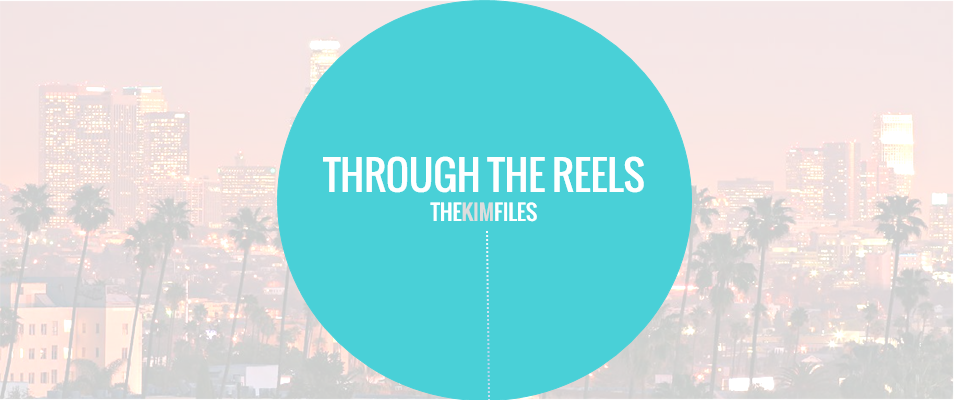 |
| Faye Dunaway & Warren Beatty with Denver Pyle in Bonnie and Clyde (1967) |
It's nearly impossible not mentioning the #42 film on this AFI Top 100 list when talking about American cinema—particularly the shift to the "new Hollywood" era of the 1970s. Bonnie and Clyde might be an overly simplistic film about complicated-ish people, but it's the unrelenting build-up to a bloody ending for which its best known. The small but effective focus is enough to cement it in the film history books.
The year is 1933. At the height of the Great Depression, young and bored waitress, Bonnie Parker (Faye Dunaway), meets smooth-talking rascal, Clyde Barrow (Warren Beatty), when she spots him attempting to boost her mom's car. More intrigued than angry, she quickly learns that the recently released from prison Barrow is in fact a bank robber—or rather, he'd like to think he is. To prove he's not all talk, he robs the nearest store and the rest is history. Running off to together in excited glee, the pair boost cars, robs banks (and really, anywhere else with a cash register), before expanding recruitment of the gang to include trigger-happy mechanic, C.W. Moss (Michael J. Pollard), and Barrow's big brother Buck (Gene Hackman). Buck's wife, Blanche (Estelle Parsons), is a reluctant tag-a-long.
The carefree robberies turn ugly as the body count rises, and the gang's infamy begins to follow them wherever they try to hide. With the state police in hot pursuit, the couple knows their days are numbered, and they shroud that reality with a romanticized perspective on ever-lasting fame surviving death. The message may be a bit on the nose, but it's hard to argue with the facts, considering the subject matter.

There is a unique realism to this film that's disconnected from the acting. The set design, costuming, cars, all of it litter the screen with a visual construct of the time. Some details are painstakingly re-imagined, notably the most violent sequences. It's the interpersonal relationships that are historically fudged. That acting component pulls Bonnie and Clyde away from reality. The film plays into extremes, the playfulness of the young crew versus the seriousness of the police; the unrealistic, exaggerated characteristics of each real life person, all bestowed cartoonish personalities. Even the romanticism between Bonnie and Clyde has a heightened falsity to it, though it was good to have a least a general hint at the sexual "dysfunction" between the two, despite Clyde's rumored bisexuality being brushed under the thematic rug
Dunaway has this magnetic sex appeal which is evident even to the most obtuse viewer, and Beatty has an infectious youthful exuberance, despite also looking too old to play the 24-year-old Barrow. Their chemistry is on fire, and the movie relies heavily on their relationship, the obsession they have for one another, and what they're willing to sacrifice for their life together. They may be the focus, but the film's most interesting character is Buck Barrow, played by Hackman, who had the strongest presence of the bunch with his confidence, laid back humor, and toughness. I believed every second of his performance.
I wish the same could be said about Estelle Parsons as Blanche, who may well give the most irritating and shrill portrayal of any character I've ever seen, real or fictitious. It boggles my mind that Parsons won an Academy Award for the part—especially when Blanche herself, the only surviving member of the group, despised her onscreen representation, citing Parson's ridiculous and constant shrieking as offensive. I could not agree more. She's painful to watch—it's with Bonnie that we connect in our mutual hatred of her, and the film more or less blames her for constantly getting them caught. That's just lazy storytelling, and there were times when we'd all break out laughing at how unintentionally comedic Estelle Parsons was. I wish I could say that humor was welcome, but it wasn't. I felt embarrassed for her.
I wish the same could be said about Estelle Parsons as Blanche, who may well give the most irritating and shrill portrayal of any character I've ever seen, real or fictitious. It boggles my mind that Parsons won an Academy Award for the part—especially when Blanche herself, the only surviving member of the group, despised her onscreen representation, citing Parson's ridiculous and constant shrieking as offensive. I could not agree more. She's painful to watch—it's with Bonnie that we connect in our mutual hatred of her, and the film more or less blames her for constantly getting them caught. That's just lazy storytelling, and there were times when we'd all break out laughing at how unintentionally comedic Estelle Parsons was. I wish I could say that humor was welcome, but it wasn't. I felt embarrassed for her.

Bonnie and Clyde may not feel as special now as it very much was in 1967. Many film historians consider this movie specifically to be a turning point in Hollywood—a shift towards violence and sex on screen, and an overt rejection of the dissipating censorship code of the 1930's. And there was a notable change in the films that followed; many are included on this countdown for pushing the limits of the censors, but it's this bullet-ridden, romanticized biopic that revved that engine first.
My prediction is that it may well stay right where it is on this list during the next go-around, even if it isn't really a complete package of cinema greatness.
Rating: ★★★ / 5 stars
Check back next time for #41 on the list, King Kong — or better yet, have your own viewing party and watch along with us!

No comments:
Post a Comment